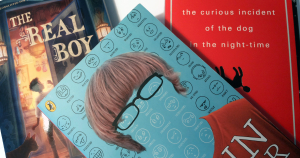
Diversity in Single Serving Slices
When it comes to writing, we have to be willing to examine, with suspicion, our own character creation and world-building.

When it comes to writing, we have to be willing to examine, with suspicion, our own character creation and world-building.

There are many different ways an author can express a sign language on the page; let’s take a closer look.

Here is a key insight to creating realistic autistic characters: We do not do the visibly autistic things we do because of “autism,” full stop. Like non-autistic people, we are responding to our experiences of the world. Those experiences simply differ from those of non-autistic people.
We’re wrapping up Autism on the Page, and announcing our next exciting event—a week of posts focusing on representation of mental illness.

As much as I crave representation in fiction, it bothers me that some people seem to see autism as a way to create conflict or add a unique viewpoint to a narrative. It is even more disturbing when so many of these portrayals are inaccurate or incomplete.
Here’s the thing no one tells you about people with a medical condition: The disease is always on their mind, but they don’t always want to think about it.

An estimated 1 in 7 women suffer from chronic pelvic pain; it’s bizarre and disappointing that despite these statistics, there are distinctly zero characters with this condition.
I can feel their eyes on me. They’re all staring, judging.
Thanks for keeping up with us, and we hope you enjoy the series. One more day!